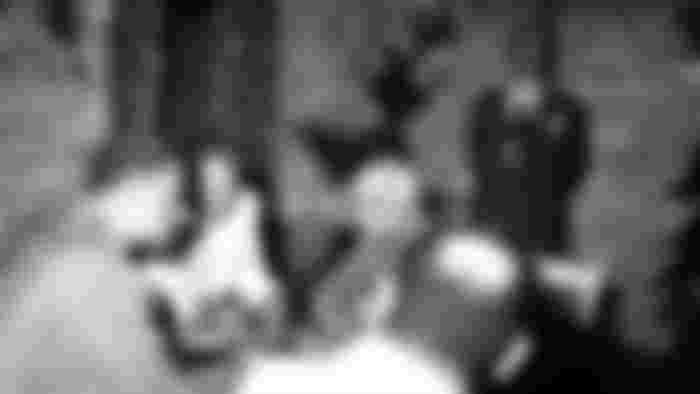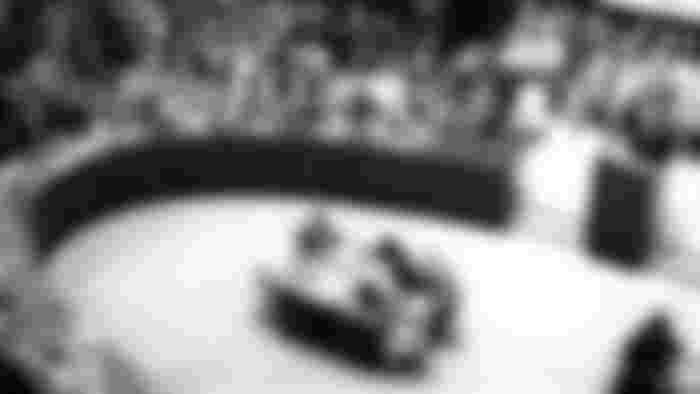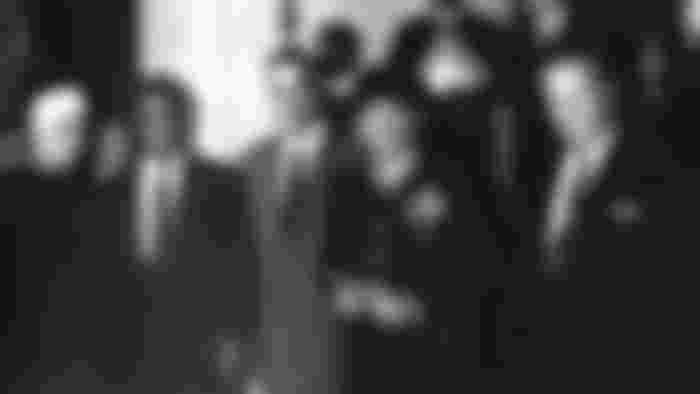The conversation between the Indian Prime Minister Javarharlal Nehru and the Egyptian President Gamal Abdel Nasser is closely followed by the President of the Socialist Federal Republic of Yugoslavia, Josip Broz Tito, in Brijuni in 1956.

It may seem like a friendly conversation after important meetings, but this photo is a testimony to the introduction to the creation of the Non-Aligned Movement, whose first summit began in Belgrade on September 1, 1961.
At the summit, the leaders of the states gathered around a common idea - to counterbalance the then bloc-divided world, to oppose colonialism and the arms race.
"I believe that we will do a great service to the world, if we clearly and decisively point out the path that leads to calm, freedom, equality and peaceful cooperation of all peoples," said Josip Broz Tito, President of Yugoslavia - one of the pillars of the Movement. .
Unlike Yugoslavia, which was one of the founders, and then influenced it to survive, the Non-Aligned Movement still exists, but without a significant influence on geopolitical and economic events in the world.
How did the Non-Aligned Movement come about?
"Yugoslavia was the connective tissue, which allowed disagreements between various countries to be ironed out, because it cooperated well with many," historian Dragan Bogetic told the BBC in Serbian.
The movement played a role in liberating certain countries from colonial powers, but has shown weaknesses since its founding.
The non-aligned decided to impose themselves as a "peacetime current, which calls on all countries to resolve their disputes peacefully," in a bloc-divided world where, according to Bogetic, "tensions between the United States and the USSR grew."
The story actually began five years before the first conference, when the Prime Minister of India, Jawaharlah Nehru, the President of Egypt, Gamal Abdel Nasser, and Tito met at Tito's villa in Brijuni.

That July, they agreed to establish the Non-Aligned Movement and sealed the agreement with the Brioni Declaration, which stated, among other things, that "peace cannot be achieved by division, but by striving for collective security on a global scale and expanding the area of freedom." lands over another ".
The countries then gathered as a group that did not want to join any bloc, but it took almost 10 years for the Non-Aligned Party to form as a "real political movement".
The movement proved to be an important factor in the United Nations, which could very well have influenced the course of world politics.
"It is no coincidence that the Movement's summits were held in September, ahead of the UN General Assembly, which is traditionally held in October."
Why was Yugoslavia important for the Non-Aligned and what is Tito's role?
Although there was no formal leadership in the Movement, the informal leaders, as the initiators of the establishment, were officials from three countries - Yugoslavia, India and Egypt.
"Yugoslavia has taken a leading role in the Movement, because without such a movement it would hardly be able to survive."
Tito soon emerged in the first place as an informal leader.
"The reason is that Yugoslavia previously took an awkward position to break away from the Soviet Union, while the attachment to the West led to the dismantling of the communist system, which Tito feared," says the historian.
"The only way to preserve independence was to find a powerful ally who represents neither East nor West, and that could only be Third World countries."

Belgrade summit and festive atmosphere
In the summer of 1961, Belgrade summit and festive atmosphere
In the summer of 1961, during the Cold War between Washington and Moscow, Belgrade was preparing to host a large and important international event.
The flags of 25 countries from four continents, which did not belong to either the eastern or western bloc, fluttered in the city center and at the airport.
Hundreds of people came out on September 1 to Terazije and the square in front of the then Federal Assembly (now the National Assembly of Serbia) to greet officials, mostly from African and Asian countries such as India, Indonesia and Egypt, who were slowly liberating themselves from colonial rule.
The initiating leadership was later joined by two other large countries, which were among the first to get rid of the colonial authorities - Ghana and Indonesia, led by President Kwame Nkrumah, and Sukarno, the President of Indonesia.
Bogetic explains that Sukarno, as the president of a large Asian country free from colonialism, advocated the establishment of regional movements, as well as Nkrumah in Africa.
"Tito opposed that, believing that it would only lead to further divisions," says the historian, adding that "through other crises within the movement, Tito managed to impose himself as an authority and help them overcome them."
However, that did not solve the problem of divisions and conflicts within the Movement itself, which has shaken them over the years. " the Cold War between Washington and Moscow, Belgrade was preparing to host a large and important international event.
The flags of 25 countries from four continents, which did not belong to either the eastern or western bloc, fluttered in the city center and at the airport.
Hundreds of people came out on September 1 to Terazije and the square in front of the then Federal Assembly (now the National Assembly of Serbia) to greet officials, mostly from African and Asian countries such as India, Indonesia and Egypt, who were slowly liberating themselves from colonial rule.
The initiating leadership was later joined by two other large countries, which were among the first to get rid of the colonial authorities - Ghana and Indonesia, led by President Kwame Nkrumah, and Sukarno, the President of Indonesia.
Bogetic explains that Sukarno, as the president of a large Asian country free from colonialism, advocated the establishment of regional movements, as well as Nkrumah in Africa.
"Tito opposed that, believing that it would only lead to further divisions," says the historian, adding that "through other crises within the movement, Tito managed to impose himself as an authority and help them overcome them."
However, that did not solve the problem of divisions and conflicts within the Movement itself, which has shaken them over the years. "

How did the Non-Aligned survive?
Bogetic says for the BBC that the non-aligned gathered primarily politically, but they were kept together by economic interests, although economic cooperation during the first decades was not in the foreground.
Bogetic reminds that "by strengthening the independence of the former colonies, Yugoslavia strengthened its own, primarily through economic cooperation."
"It expanded the market with incredible speed, just look at what [construction company] Energoprojekt did," says Bogetić.
What about the Non-Aligned Today and what does this movement represent?
It has been 59 years since the original idea to fight against colonialism and bloc divisions.
Historians agree that the Movement, despite expanding to 120 states, which represent the majority needed to make decisions at the United Nations, and in which 55 percent of the world's population lives, no longer has the influence it was known for in the second half of the 20th century.
The first cracks in the movement appeared during the Cold War, when some member countries began to side with the Soviet Union, ie the United States.
This especially refers to Cuba and its leader Fidel Castro, who was then criticized for compromising the entire Non-Aligned Movement by adhering to the Soviets.
And the harmony was additionally disturbed when the Soviet Union invaded Afghanistan, since some countries supported the USSR, and some others Afghanistan.
Since the end of the 1980s, the Movement no longer has the political weight by which it was recognizable in the second half of the 20th century, but it still has "great significance" in international relations.
"Although it is no longer a powerful association of states as it was, the Non-Aligned Movement still represents a powerful voting machinery in the UN," concludes Bogetić.




I didn't know they still existed. Thank you